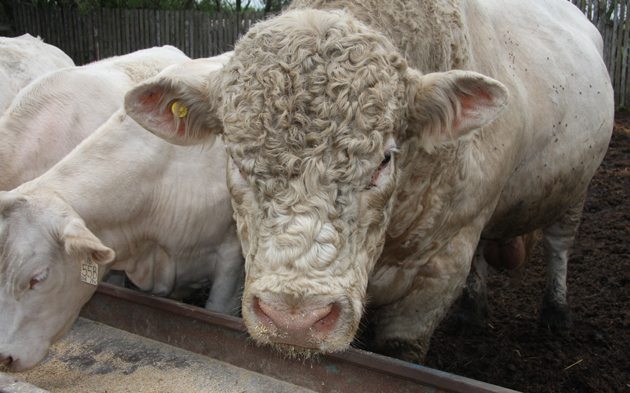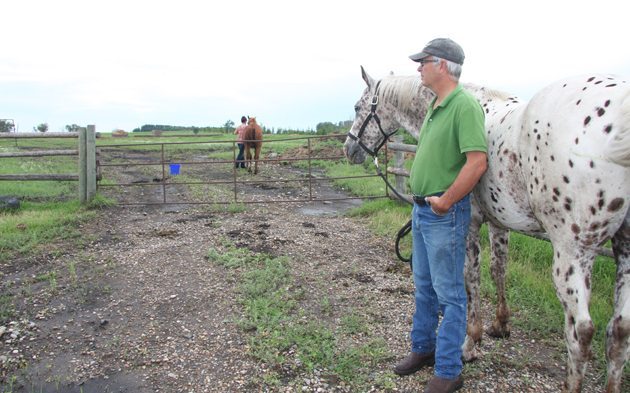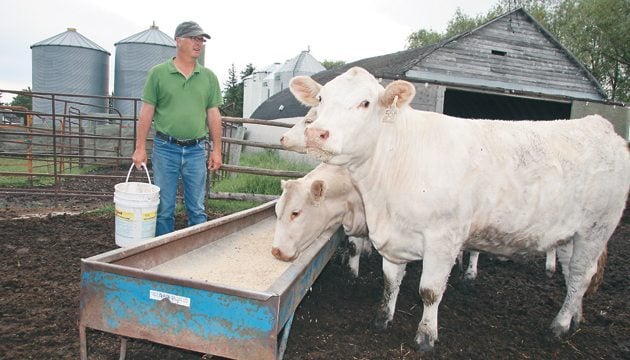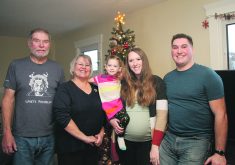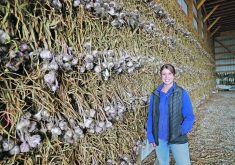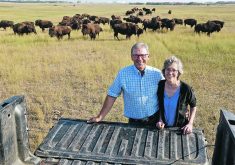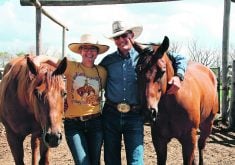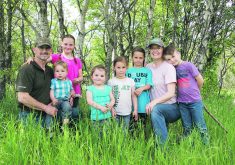Fourth generation farmers enjoy lifestyle and say current prices make it an exciting time in the cattle industry
INGLIS, Man. — Some people go on vacation to experience what Carman and Donna Jackson enjoy every day on their mixed farm in western Manitoba.
“Sometimes when I’m out with the cows and I look at the sky, I know why I do it,” said Donna.
“You have to love farming to be successful at it,” added Carman. Their five daughters represent the fifth generation on the Jackson farm.
Benefits include enjoying the outdoors, respecting animals and “seeing life every day,” said Donna. Like her husband, she can often be found riding their horses.
Read Also

Livestock leads Canada’s farm economic outlook
Forecasts by a major Canadian farm lender featured good and bad news on the financial health of both farmers and Canadians at large.
“You’re lucky to work with someone you married and love,” said Carman.
Donna said a laidback personality makes the living and working arrangement of full-time farmers possible.
“Both of us are passionate about family and cattle,” she said.
The couple, long active in breed associations, cattle shows and 4-H, has been rewarded for their successes in farming. They were nominated for Manitoba’s Outstanding Young Farmers award and named Charolais breeder of the year in Manitoba.
Those involvements allowed them to be vocal ambassadors for agriculture and learn from other farmers.
The couple, who grew up in purebred cattle operations, produce 1,500 acres of wheat, canola and barley, 500 acres of hay and raise 150 Charolais and 50 Simmental cattle.
High Bluff Stock Farm, which sits on the edge of Inglis, was named for Carman’s grandfather’s homestead.
They work with extended family but maintain separate operations and employ a full-time worker and two seasonal ones during their January calving season.
They also grow seed grain and market it through Jackson Seeds, formerly owned by Carman’s brother, Glenn, and his wife, Terry.
They’ve sold embryos around the world. A cow sired by a bull they raised received top awards at a show in Australia.
The Jacksons were able to graze their cattle until December last year by rotational and bale grazing.
“We try to keep the cows away as long as possible,” said Carman.
Like others in the industry, effects of the BSE crisis hit hard, eliminating smaller herds.
“We lost two generations of kids that might have farmed,” he said. Many acres went into grain production as a result.
“So now you have marginal land in grain production that shouldn’t be,” said Carman.
The price of an animal went from $1,700 to $800 in a matter of hours, while cull cows went from $1,000 to being impossible to sell.
Good prices for canola kept the farm viable.
“The grain farm subsidized the cows quite heavily,” said Carman, noting their annual bull sale, held in March at Donna’s parents’ Rolling D Charolais at Dropmore, also helped.
On the upside, careful selection paid dividends.
“It’s a stronger herd because of it,” said Donna.
Carman said today’s high prices might lure people back to the cattle business but it’s too early to tell.
It should allow producers to spend money on equipment and infrastructure, he said, citing his own plans to build a new calving barn and reconfigure cattle yards.
As of July, most clouds had brought little more than a half-inch of rain at a time. Their crops were ahead of last year despite a late frost after germination and spotty rainfall.
Carman predicted his wheat crop would come in above average but the hay “way below normal.”
“Feed might be an issue for some. Producers may count bales and cows and adjust accordingly.”
On the farm, he handles cattle record keeping, day-to-day management and genetics, noting they use artificial insemination on 80 percent of the herd.
“I can genetically match cows better so I can access genetics,” said Carman, who keeps an interest in semen from bulls he sells.
“Some bulls are worth a lot but you can get in on the semen end of it.”
Donna, a bookkeeper by trade, handles herd health and bookkeeping along with an accountant.
Daughter Erin, an agronomist with DeKalb in Saskatoon, handles field plans.
The Jacksons’ future hinges on their daughters’ plans, they say.
“If the girls indicate they want to be involved, we will need more cattle,” said Donna.
Fawn works as an environmental manager with the Canadian Cattlemen’s Association in Calgary, Haylan is a school teacher in Rossburn, Man., Autumn is a nurse in Bonnyville, Alta., and Tomina is studying agriculture at the University of Saskatchewan.
All have their own cattle and help on the farm when possible.
For now, the Jacksons plan to continue to put in the work.
“I never see us without cows, but when we’re 60, I don’t want to be calving 200 cows in January,” said Donna, who also hikes, cross-country skis and practices karate.
“We feel we are at a good place and feel we’re at a good time in our industry,” she said.




